Bihar, a land blessed with greenery and scenic beauty, is home to many waterfalls. Mughal Emperor Akbar’s Court historian, Abu’l Fazl, wrote in his book Ain-i-Akbari that more than 200 waterfalls appear in Bihar during the monsoon.
If you are planning to visit Bihar, then pack your bags, lace up your boots, and take an unforgettable journey to uncover the mesmerizing beauty of Rohtas Waterfalls!
Rohtas district is located on the oldest national highway and is well-connected with other cities of the state. Nestled amidst the verdant greenery of Rohtas district in Bihar, these cascading marvels are truly a sight to behold. So, without further ado, let’s delve into the exploration of the top 10 waterfalls that are bound to leave you spellbound.
Tutla Bhawani Waterfall
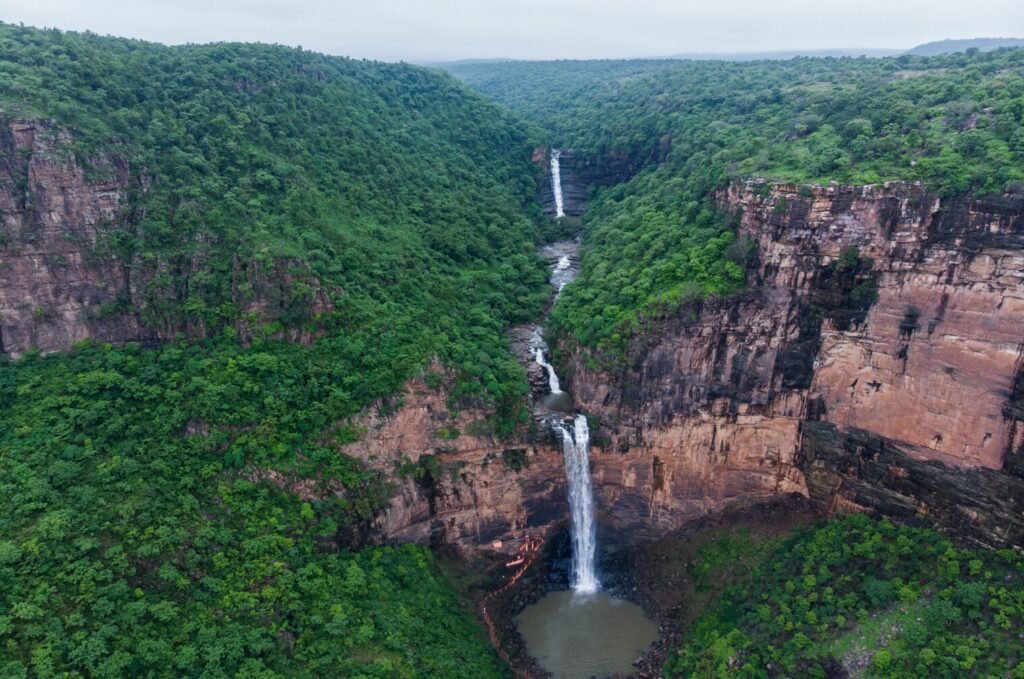
Our adventure kicks off with the crown jewel of Rohtas Waterfalls – Tutla Bhawani. It is located approximately 20 Km southwest of Dehri on Sone in the Tilothu block of Rohtas District.
Standing tall as the tallest and the best waterfall in the region, Tutla Bhawani captivates visitors with its sheer magnificence and unspoiled surroundings. The waters cascade down the rugged cliffs, creating a symphony of both sight and sound that will undoubtedly leave you in awe.
Height of waterfall – 180 Feet.
How to Reach
Sasaram Railway Station is the nearest railway station and is just a few km from Tutla Bhawani waterfall. You may take a taxi, drive to the place, use Google Maps or ask locals for help.
Things to Do
- Visit several other tourist places around the Tutla Bhawani waterfall, such as the Sher Shah Suri Tomb, Nehru Park, etc.
- Enjoy trekking in Kaimur Hills valley to reach the waterfall and Tutla Bhawani temple.
- Enjoy the bath near the waterfall.
Dhua kund Waterfall
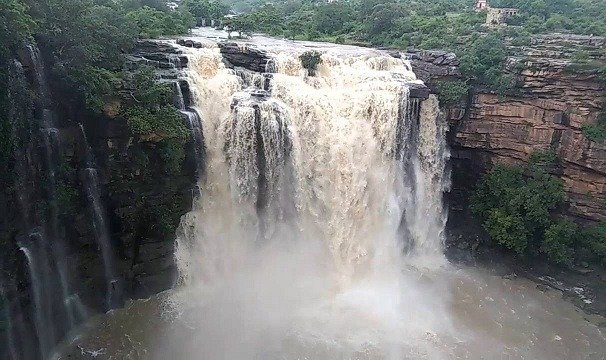
Dhua Kund is a lovely waterfall in the hills of Bihar. It’s formed by the Durgavati River. The water flows down gently over the rocks, making it a calm and relaxing spot.
To see it, you need to cross the Dhua Kund bridge and head to the Dhua Kund temple. And there, you’ll discover the magnificent Rohtas waterfall, waiting to be admired and enjoyed.
Height of Waterfall – This Rohtas waterfall is about 25 meters high
How To Reach
This waterfall has good road accessibility. One can reach via car as it is around 10 km away from Sasaram.
Things To Do
- Visitors can do trekking, camping, and bird-watching. The region is home to many bird species, including the Indian Pitta, Crested Serpent Eagle, and the White-rumped Shama.
- Click pictures and enjoy the view of Dhua Kund from Dhua Kund temple.
Manjhar Kund
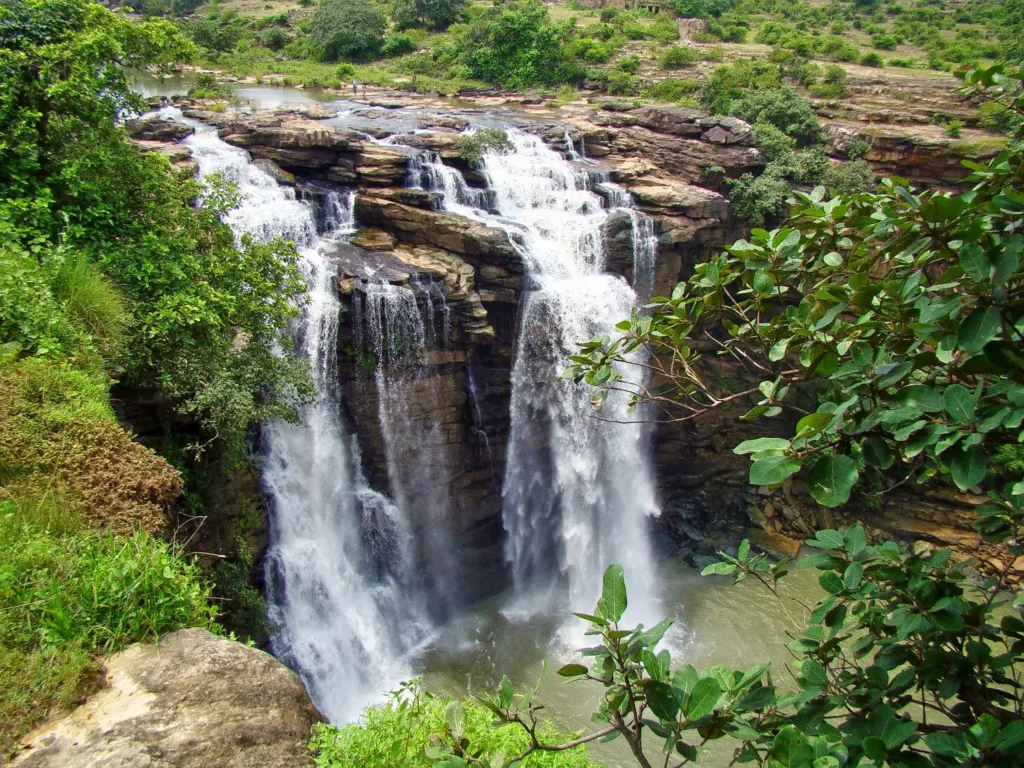
Manjhar Kund/Sita Kund is among the top tourist destinations in Bihar. The waterfall in Rohtas also has an ancient Sikh value attached to it, as it is believed that Sikhs used to carry the Guru Granth Sahib to this place. Besides this, it is also said that the water of the Kund is full of natural minerals.
Height of Waterfall – 360 Feet
How To Reach
Manjhar Kund has good road accessibility and visitors can reach via car as it is around 10 km from Sasaram.
Things To Do
- Enjoy the splendid view of Sasaram city and GT road.
- Visitors can enjoy swimming in the water.
- Have a picnic near Manjhar Kund.
Kashish Waterfall
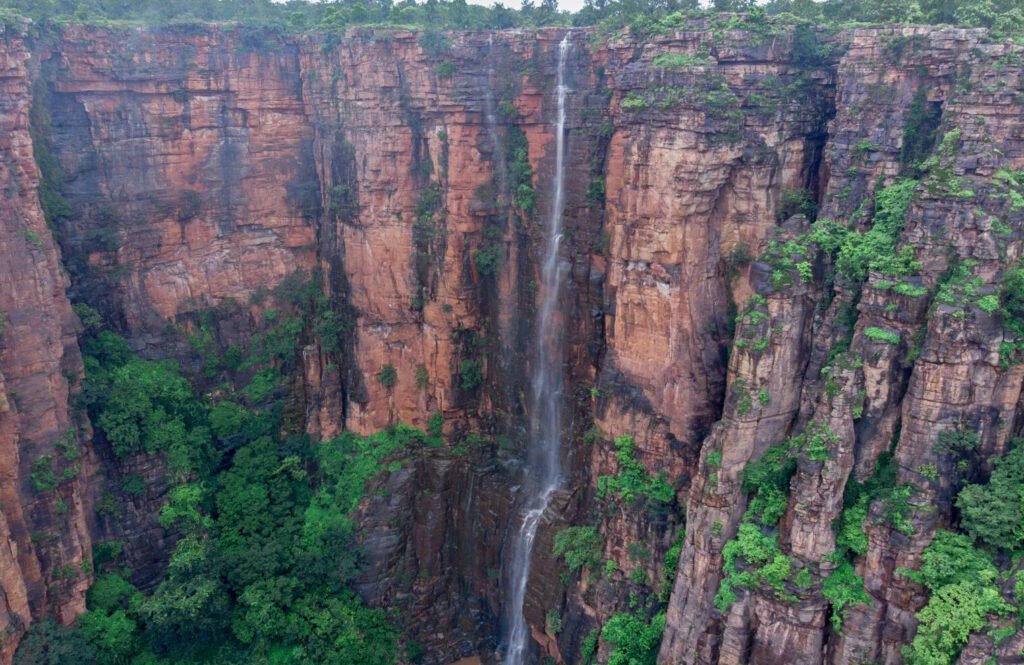
Kashish Waterfall is one of the highest waterfalls in Bihar. It is situated in the Amjhore village in Bihar. Concealed within the wilderness of Rohtas, Kashis Waterfall stands as a true hidden gem awaiting exploration.
Trek through dense forests and rocky terrain to uncover this natural marvel, and be rewarded with panoramic vistas and cascading Rohtas waterfall that will leave you speechless. The water falls from a height of 850 feet, from where four other waterfalls originate and fall in different directions.
Height of Waterfall – 850 Feet
How To Reach
The nearest railway station to Rohtas is the Dehri on Sone Railway Station, an hour’s drive from the waterfall. Visitors may take a taxi/car and drive to the place.
Things To Do
- Visit other tourist attractions like Rohtasgarh Fort, Chaurasan Shiv Mandir, Sita Kund, etc.
- Enjoy a bath in the calm water.
Telhar Kund Waterfall
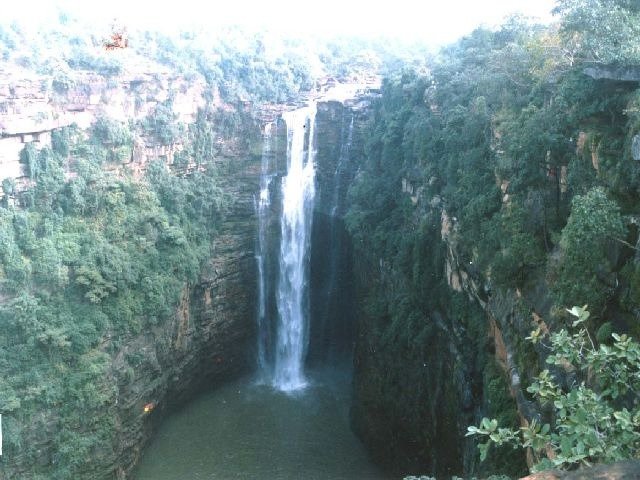
Telhar Kund is a popular waterfall which is in the Kaimur district near Bhabua. This waterfall is in close proximity to the Durgavati River on Bhabua, and it is on the Rohtas plateau. Telhar Kund also has a dam called the Karamchat Dam and is surrounded by splendid views, establishing itself as one of the most captivating spots within the Rohtas waterfalls.
Height of Waterfall – 80 Feet
How To Reach
Bhabua railway station is the nearest railway station to the Telhar Kund. The waterfall is a 32 km drive away from the railway station.
Things To Do
- Visitors can enjoy swimming.
- Enjoy other attractions near the fall, including the Maa Mundeshwari Temple, Kaimur Wildlife Sanctuary, Karamchat Dam, etc.
Guptadham Waterfall
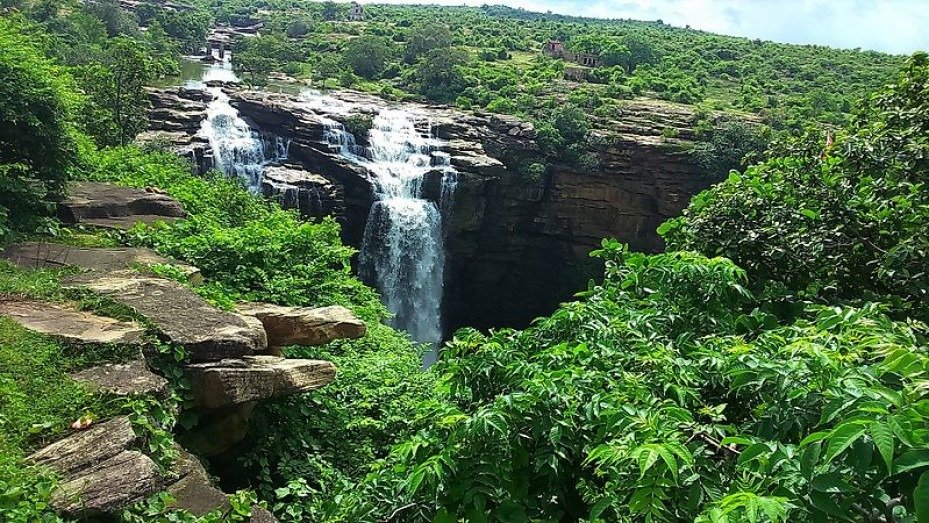
GuptaDham Waterfall is not only a place of natural beauty but also holds cultural and spiritual importance for the locals in Rohtas district. This Rohtas waterfall is named after the nearby Guptadham Mahadev Temple, adding to its religious significance.
It’s a picturesque spot where visitors can enjoy nature’s beauty and pay homage to Lord Shiva at the temple. The area around Guptadham Waterfall is lush with greenery, making it an ideal place for picnics and nature walks.
Individuals can also visit Dhawalkund Waterfall, as it is nearby. Visitors have to walk just 1-2 km from the temple to reach the location.
How To Reach
To reach Guptadham Waterfall, visitors need to trek about 11 kilometers along the Guptadham Trail. The trail begins near Paniyari Ghat from the Sasaram side.
Things To Do
- Enjoy a trek on Rohtas Valley of Kaimur Hills.
- Enjoy the overwhelming view of Dhawalkund Waterfall.
- Visit Guptadham Mahadev Temple and pay homage to Lord Shiva.
- Take a refreshing dip in the cool waters of the waterfall.
Geetaghat Waterfall
Geetaghat Waterfall holds a special place in the hearts of locals and tourists alike for its natural beauty and cultural and spiritual significance. It’s named after the famous religious scripture, the Bhagavad Gita. The Rohtas waterfall offers a serene escape from the hustle and bustle of urban life.
Visitors can reach Baba temple called Geeta ghat ashram, and a small trek on slippery stones will take you near the waterfall.
How To Reach
From the Sikariya village, visitors can take the road that goes toward the hills. You will find a road running parallel to the canal. This same road parallel to the canal and root of the hills takes you to GeetaGhat waterfall.
Things To Do
- Enjoy the mesmerizing view of several waterfalls on the way to GeetaGhat.
- Visit the nearby temples, such as the Geetaghat Ashram.
How to Reach Rohtas
Reaching Rohtas to experience its captivating Rohtas Waterfall is made convenient through different modes of transportation.
By Air
For air travelers, the closest airport is Jay Prakash Narayan International Airport in Patna, situated approximately 160 kilometers away from Rohtas. From Patna Airport, visitors can opt for a taxi or rental car to embark on a scenic journey to Rohtas. The route typically involves traveling southwest on NH922 and NH22, passing through picturesque landscapes and small towns.
By Train
Travelers preferring the comfort of trains can rely on Dehri-On-Sone Railway Station, which serves as the nearest railhead to Rohtas. The Dehri-On-Sone Railway Station has good connections to major cities such as Delhi, Kolkata, and Patna. From the railway station, travelers can hire local taxis or use public transportation to reach Rohtas, following NH922 or NH139, depending on the starting point.
By Bus
For those inclined towards bus travel, numerous government and private bus services operate between major cities like Patna, Sasaram, and Dehri-On-Sone to Rohtas. Travelers can board buses from prominent bus terminals and enjoy a scenic journey along well-maintained highways, including NH922 and NH139, leading directly to Rohtas.
By Road
Traveling to Rohtas by road from Patna, the capital city of Bihar, travelers can set on on an approximately 160-kilometer journey southwest towards Rohtas. The most common route involves taking NH922 and NH22, passing through towns and villages, offering glimpses of rural life and lush greenery.
For those starting from Sasaram, the headquarters of Rohtas district, the distance to Rohtas is relatively shorter, approximately 10 kilometers. Travelers can take the NH922 route, enjoying a scenic drive that typically takes less than half an hour.
From nearby cities like Varanasi in Uttar Pradesh, travelers can opt for NH19, which connects to NH22 near Dehri-On-Sone. From there, continue on NH22 towards Rohtas for approximately 25 kilometers.
Frequently Asked Questions
Historical records from Akbar’s time indicate that Rohtas boasts over 200 waterfalls cascading in various directions, showcasing abundant natural beauty.
Dhua Kund is a captivating pair of waterfalls in Sasaram, Bihar, attracting visitors with their charm and scenic allure.
In Bihar, the five notable waterfalls are:
Tutla Bhawani Waterfall – Located in Rohtas district.
Dhua Kund Waterfall – Situated in Sasaram.
Kakolat Waterfall – Found near Nawada.
Karkat Waterfall – Located in Munger district.
Manjhar Kund Waterfall – Situated in Rohtas district.
Among these, Tutla Bhawani Waterfall stands out as one of the best waterfalls in Bihar, primarily due to its scenic beauty and impressive cascade.
Tutla Bhawani Waterfall is a top tourist destination in Rohtas. Bihar Tourism organizes tours to this and other attractions.
“Kakolat lies at the southern edge of Bihar, approximately 33 kilometers from Nawada and 4 kilometers from Thali Bazar. The waterfall there is about 160 feet tall and forms a natural reservoir.
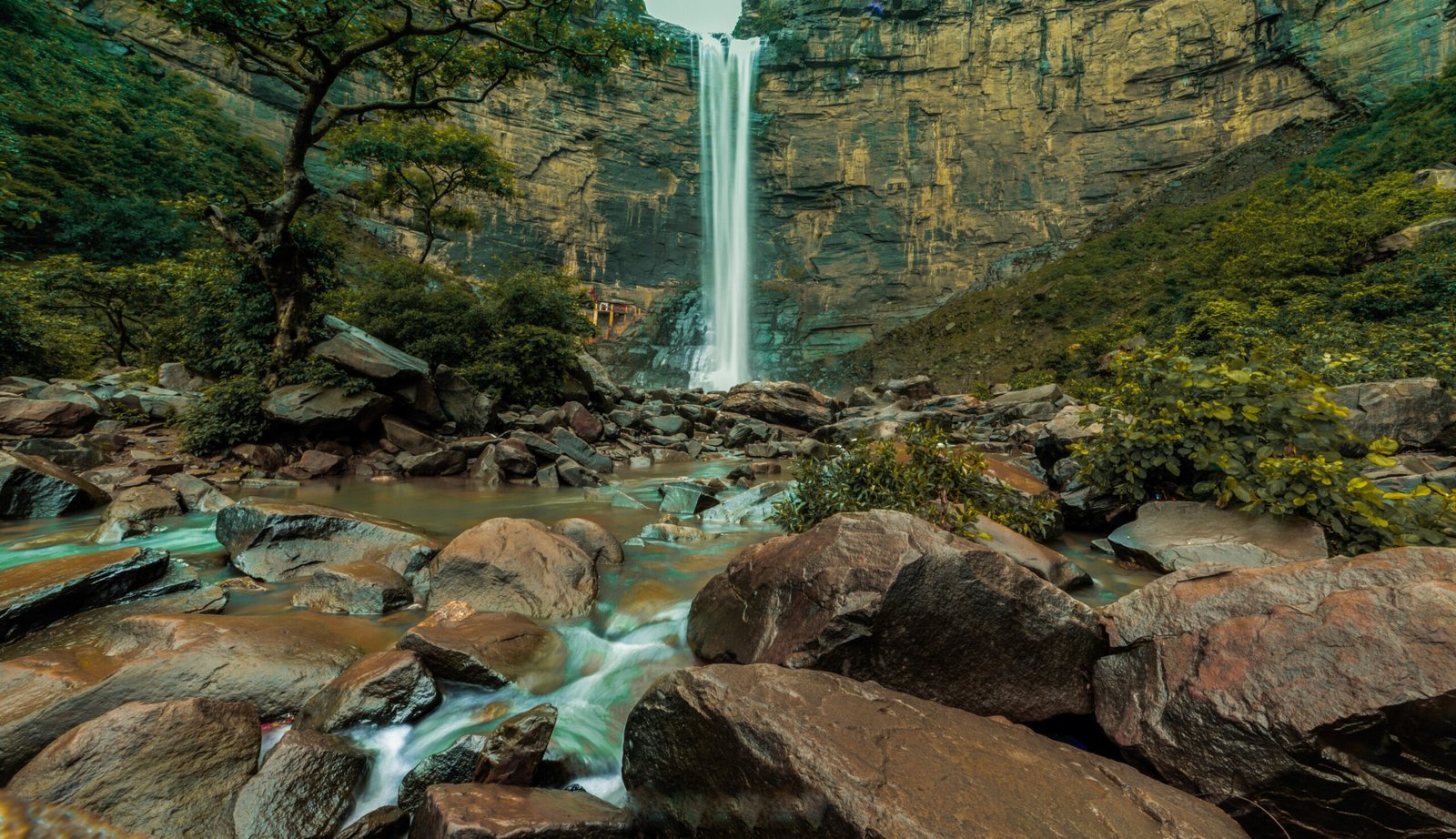


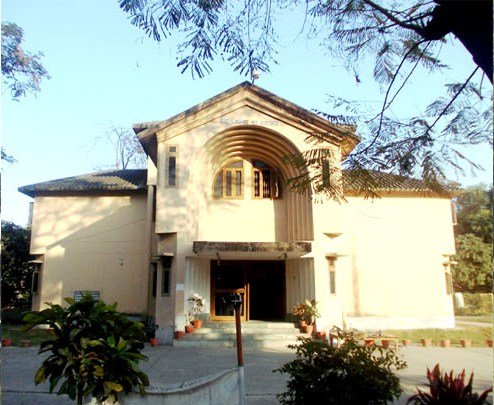
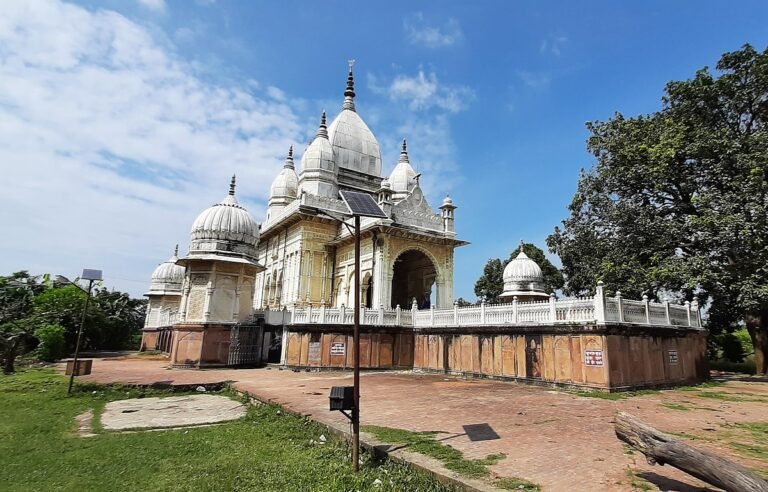

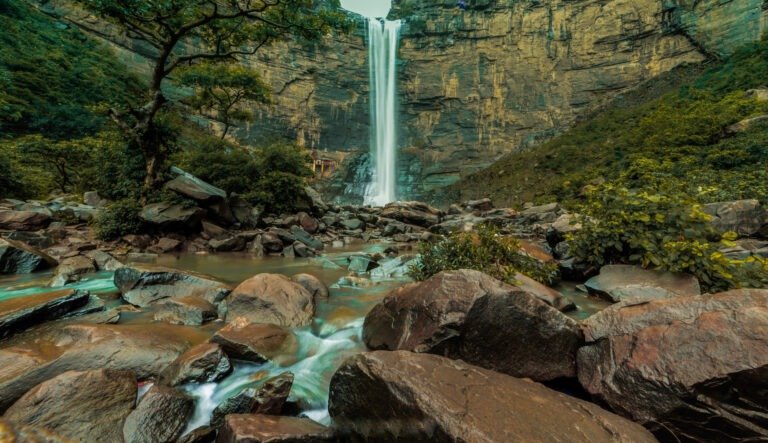
+ There are no comments
Add yours